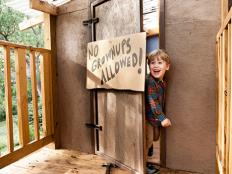
Learning to read, like learning to walk, brings about possibility, independence and strength.
With reading, children can escape to imaginary worlds and take on the roles of made-up characters. They can learn new things and explore new ideas. And at the very least, reading allows them to decipher almost any problem in any discipline. Reading is arguably the most important skill learned in a child's education.
But, what do we do when our child doesn't want to read?
Whether it's a general disinterest or a lack of confidence in their reading skills, there are several easy ways to approach reading with your child to help instill a lifelong love of turning the pages.
Read Aloud
No matter the reason for a child's reluctance to read, sharing with them an interest in written words is bound to spark something. If we show our love and appreciation for written words and the stories behind them, our children generally follow. When we read aloud, the words they're working hard to decipher and understand come to life! Make daily reading a part of your routine.
Reading aloud together brings about great discussion. You can talk about the images you're getting in your mind—who the characters are, what the places look like, why they think certain events are happening and what they think will happen next. These things inspire curiosity, and few things are more motivating than genuine questions.
For the theatrically inclined, reading aloud may also bring about play—try out new voices for characters and "act out" the story to bring it to life. Sometimes, the very thing that separates a child from a love and appreciation of reading is their ability to take the words and turn them into imagined, visual images.
Add Something New
A common complaint for older readers is that it's "boring." For this, we need novelty! Try creating a new reading space—hammocks, tree forts, sheet tents (anything but the desk, the dining room table, the bed or wherever they're used to reading). Separating reading time from homework time is sometimes all we need to make it more enjoyable. This makes reading time special.
Young readers who may be struggling with confidence or interest may find new reading props to be motivating or helpful. Things like "magic reading glasses" (sunglasses with the lenses popped out) can add an element of fun to turning the pages. You can also try assigning a special reading stuffed animal that allows them to read aloud without a critical audience. If you have a calm and patient dog or cat—even better.
There's also a great deal of evidence in support of the value of using reading trackers and colored backgrounds to support struggling readers. For this, try these reading guide highlighter strip bookmarks to help your young reader not only mark their page, but track the words when reading.
Find a Series
Ultimately, engaging in reading is all about engaging in the topics, the settings and the characters. Finding books they're interested in is as crucial to their learning to read as learning to read is crucial to their ability to learn in their future endeavors. Whatever topics, subjects or characters draw them in is worth investing in at this point (even if they're not your favorites). You can always expand their library as their reading proficiency (and interest) increases.
Graphic novel series like "Dog Man, Babymouse" and "Diary of a Wimpy Kid" are not to be discredited as valid books to inspire young readers—especially if your child is struggling to get away from picture books and into the text.
Other popular series with strong characters, immersive writing and engaging adventures for young readers include Junie B. Jones, Magic Tree House, Berenstain Bears, Henry and Mudge, Frog and Toad, Amelia Bedelia, Rainbow Magic, A to Z Mysteries, Cam Jansen and more. For older readers looking to invest in a new, engaging series try: Series of Unfortunate Events, Harry Potter, Percy Jackson, Chronicles of Narnia, the Wrinkle in Time series, to name a few.
Many of these series have also been turned into feature films or shows. If your child longs for the visually captivating elements of a movie, encourage them to first finish the book and then watch the movie to see how plot lines and character developments compare. Once invested in the characters that come about in our imaginations while reading, your young reader will likely find that it's hard to argue that the books are better. This may be exactly what they need to find the joy in reading a good old-fashioned book!
READ THIS NEXT: The Best Books to Read During the School Year









Discuss This Article